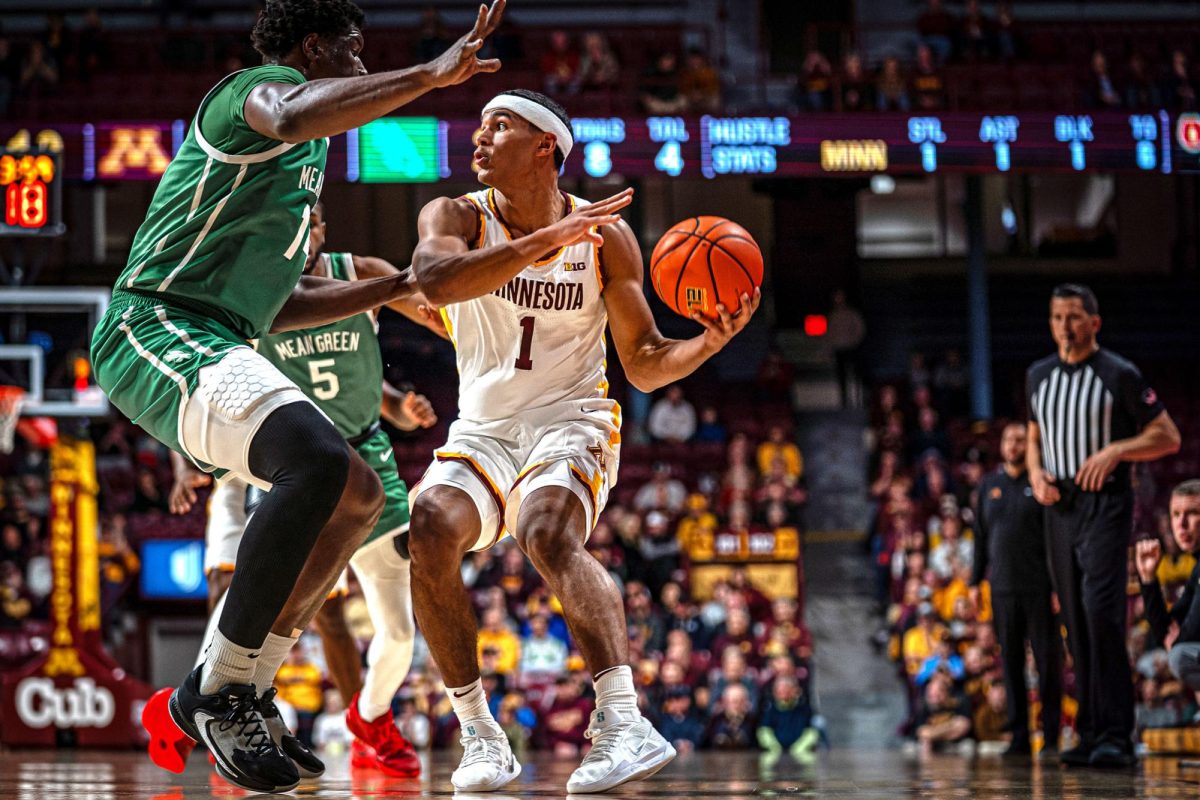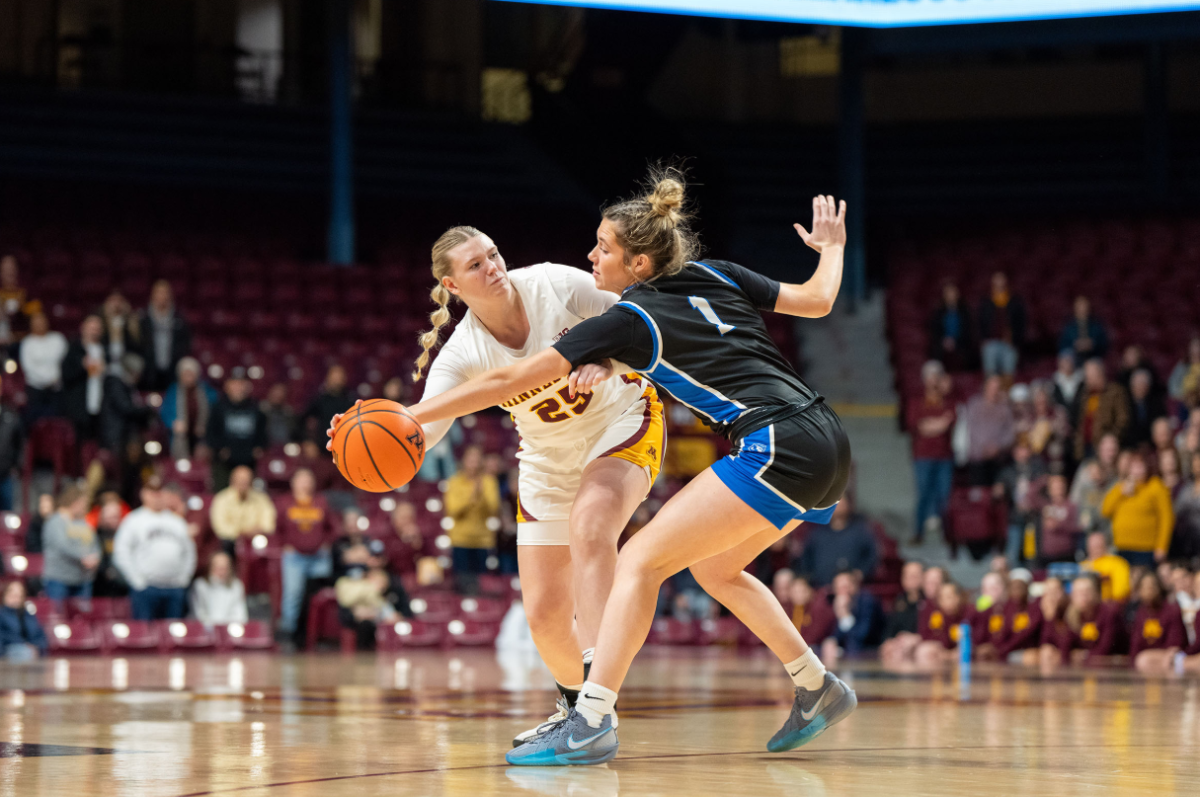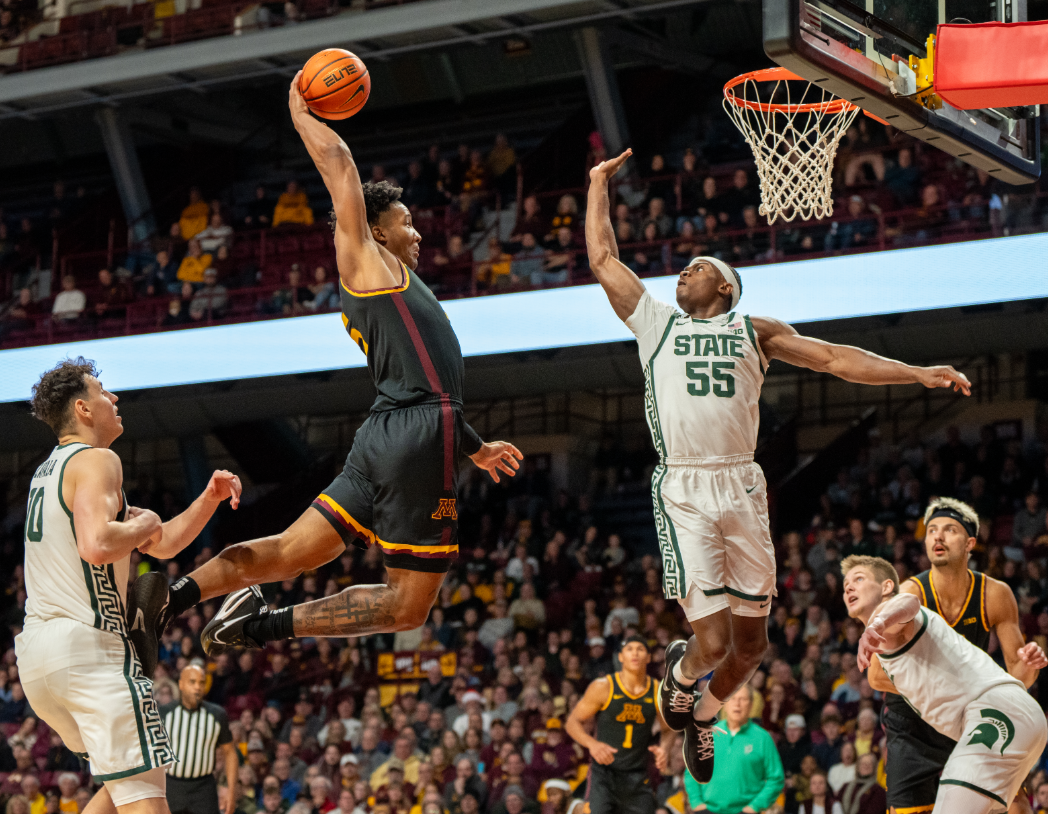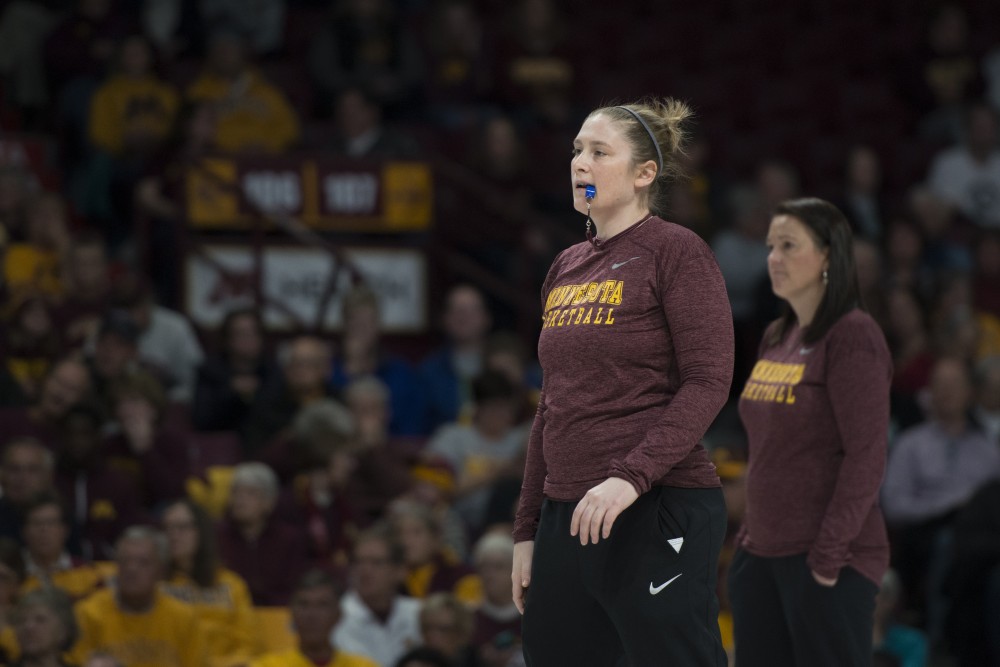Minnesota’s heptathlon competitors — who tackle distance running, sprinting, hurdles and throwing in their single event — are impressing their coaches and snagging top conference titles.
Just hours after a record-breaking performance in the heptathlon last weekend, redshirt junior Jess Herauf shied away from the spotlight and instead talked about her teammates’ performances.
“Every single one of us set career bests this weekend,” Herauf said. “I just feel blessed to be able to share this experience with such a great group.”
Following her Big Ten indoor title in the pentathlon, she had a fifth-place finish at the NCAA championships, making her the most successful of the group. The
Dickinson, N.D., native is also the Gophers’ program record holder in both the pentathlon and heptathlon.
Though Herauf may have a larger trophy case, fellow redshirt juniors Alex and Amanda Beckman are also performing close to her marks.
The twins took home sixth and eighth in the pentathlon at the Big Ten indoor championships, with Alex edging out Amanda.
And it’s not just the women’s team that features solid heptathlon athletes. Last month, sophomore Luca Wieland took home the event’s national title.
What makes these performances even more impressive is that women’s head coach Matt Bingle and men’s head coach Steve Plasencia both agree that the heptathlon is the most challenging event to train for.
“You really have to become the jack of all trades in regards to track and field events,” Plasencia said.
Here’s a closer look at what it takes to be a top heptathlon athlete:
Short and long distance running
Heptathlon competitors not only have to conquer distance running with the 800- or 1,000-meter run, but they also must be talented in sprinting and hurdles.
While most athletes split their training time between the two distance groups,
Bingle said Herauf spends most of her time participating in long-distance training.
“Jess has a pretty sensitive back, so she actually trains opposite of most heptathlon athletes,” Bingle said.
However, Herauf said during the offseason she focused on improving her sprinting — an effort that was evident in her much-improved fourth-place finish in the hurdles at the Big Ten indoor championships.
Throwing for distance
Both coaches said Minnesota’s heptathlon athletes practice the two throwing events — shot put and javelin — the least.
But that’s only because during the indoor half of their season, the javelin isn’t an event that athletes compete in.
“It definitely makes the practice time that we do get for the javelin more valuable,” Herauf said.
Despite that, the throwing events of the heptathlon happen to be Wieland’s strength. The sophomore finished second in the shot put at the national
meet.
“Luca has a lot of natural strength, which always helps,” Plasencia said. “I know he always looks to use the shot put as a place to separate himself from the others.”
Leaving the ground
Whether it’s for distance, height or being aided by the use of a pole, jumping is an integral part of any heptathlon.
While both the men’s and women’s heptathlon feature the high and long jump, only the men’s competition deals with the pole vault.
Plasencia said the event can sometimes “discourage people from competing in the heptathlon.”
“You have to throw your body in almost unnatural ways, which takes some getting used to,” he said.
But Plasencia said Wieland has always been naturally better at the long and high jump.
“Luca always walks around on his toes, so his calf muscles are enormous,” Plasencia said. “He can really propel into each of his jumps.”







